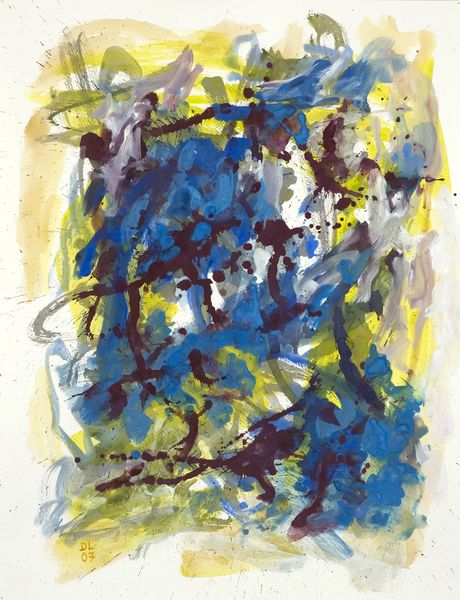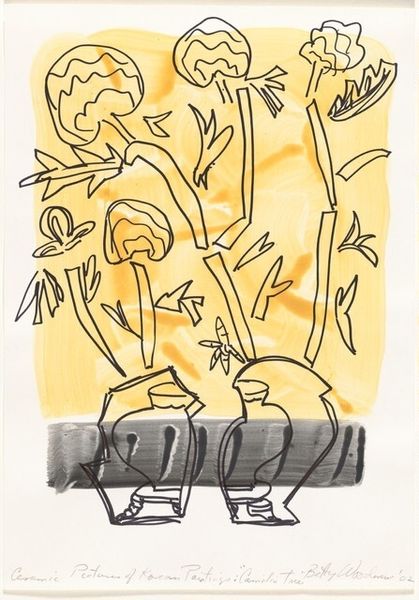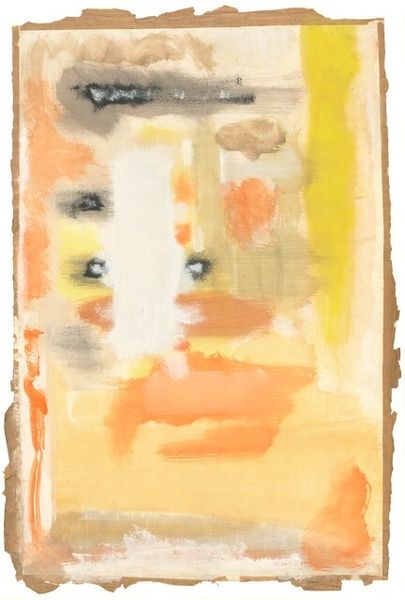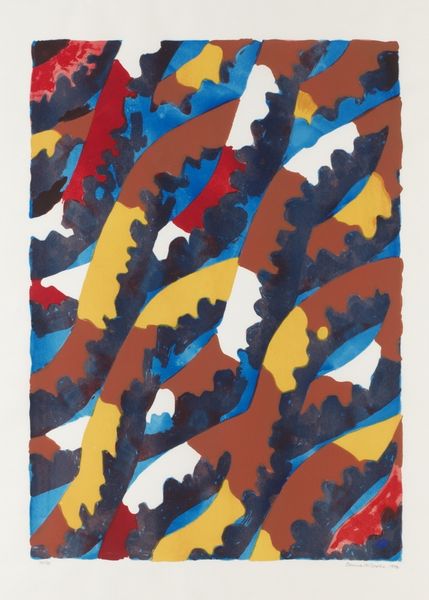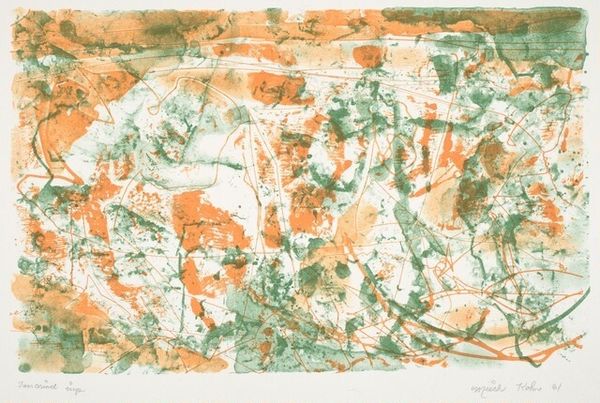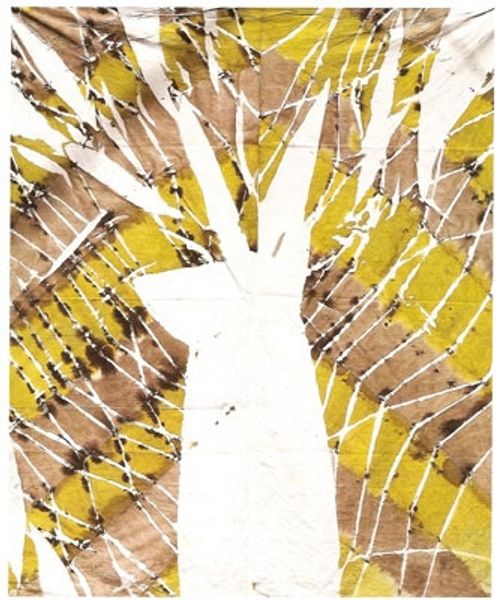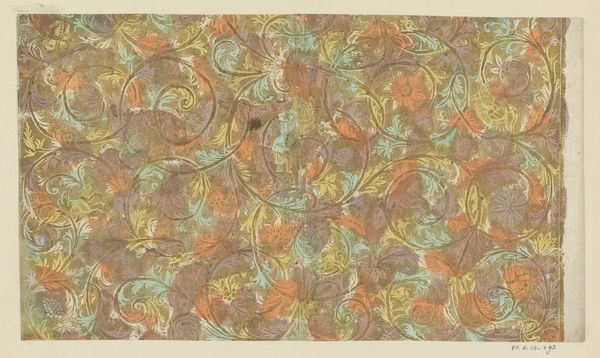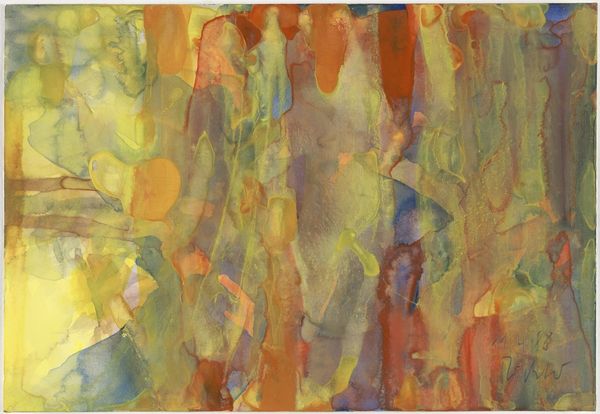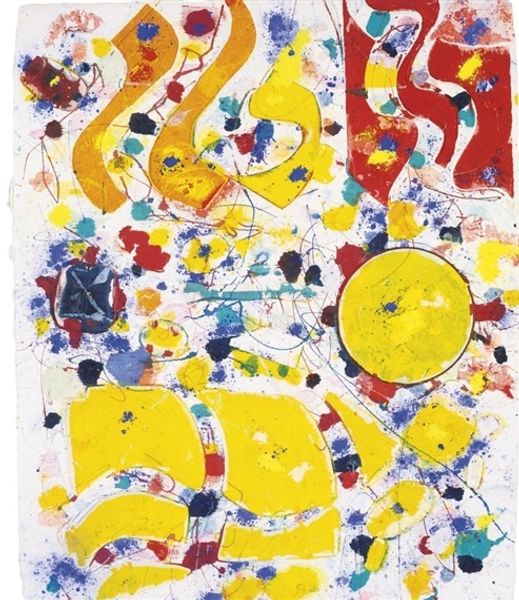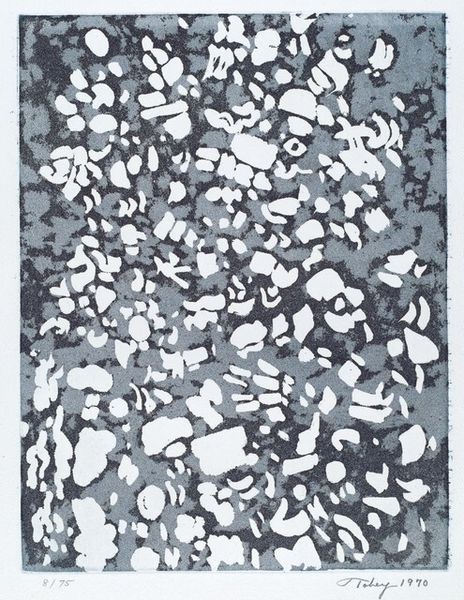
tempera, painting
#
tempera
#
painting
#
landscape
#
geometric pattern
#
abstract pattern
#
organic pattern
#
layered pattern
#
modernism
Copyright: Roger Bissière,Fair Use
Editor: Here we have Roger Bissière’s "Le Verger," created in 1955 using tempera on…something, perhaps paper. I find the composition initially chaotic, a whirlwind of abstract shapes and earthy tones. What's your take on this seeming disorder? Curator: Well, before diving into "disorder," consider Bissière’s place within the *Nouvelle École de Paris*. He was seeking an alternative to both rigid abstraction and academic figurative painting. So, the “chaos” is a carefully constructed expression. Think of it as his personal revolt against the established artistic order in post-war France. How does that socio-political context shift your view? Editor: That’s helpful. So, this ‘chaos’ is Bissière attempting to… shake things up within the art world by not subscribing to the mainstream of art during the time period? Curator: Exactly! Look closely at the individual elements: simplified, almost childlike renderings of trees. Now consider the post-war desire for simpler times, a nostalgic longing for nature. The title “Le Verger,” French for “The Orchard,” further emphasizes this idealization. Does the layered patterning maybe suggest an Edenic garden to you now? Editor: I see what you mean. Now that I know Bissière’s history a little better, it really seems like he was trying to suggest this abstract idea, almost an *impression* of a happy, simple life using landscape painting, within the bigger artistic and socio-political environment of the 1950's. Curator: Precisely! Art rarely exists in a vacuum. Understanding its place in a particular cultural and historical narrative unlocks deeper layers of meaning. Editor: This was incredibly helpful, I've definitely gotten a much clearer idea on the painting’s meaning! Thank you. Curator: My pleasure. It's these layered narratives that make art history such a compelling field of study.
Comments
No comments
Be the first to comment and join the conversation on the ultimate creative platform.
